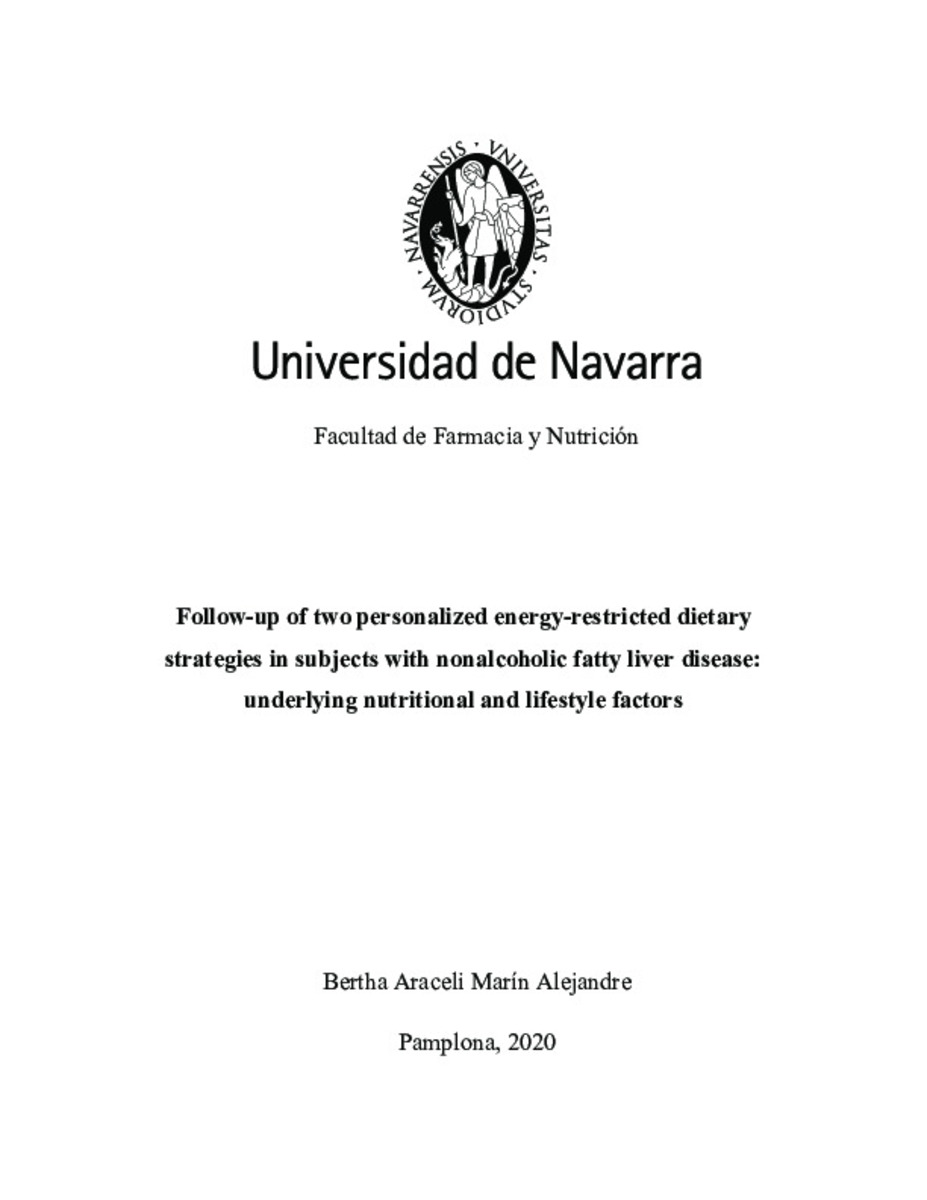Follow-up of two personalized energy-restricted dietary strategies in subjects with nonalcoholic fatty liver disease: underlying nutritional and lifestyle factors
Keywords:
Materias Investigacion::Ciencias de la Salud::Nutrición y dietética
Enfermedades de la nutrición
Medicina preventiva
Materias Investigacion::Ciencias de la Salud::Salud pública
Defense Date:
15-Dec-2020
Publisher:
Universidad de Navarra
Citation:
MARÍN ALEJANDRE, Bertha Araceli. “Follow-up of two personalized energy-restricted dietary strategies in subjects with nonalcoholic fatty liver disease: underlying nutritional and lifestyle factors". Martínez, J. A. y Zulet, M. A. (dirs.). Tesis doctoral. Universidad de Navarra, Pamplona, 2020.
Statistics and impact
0 citas en

0 citas en

Items in Dadun are protected by copyright, with all rights reserved, unless otherwise indicated.







